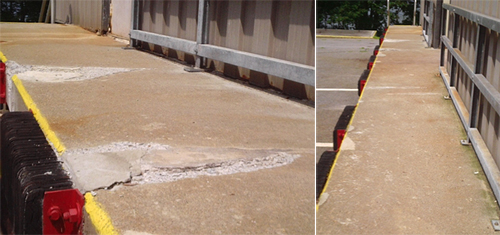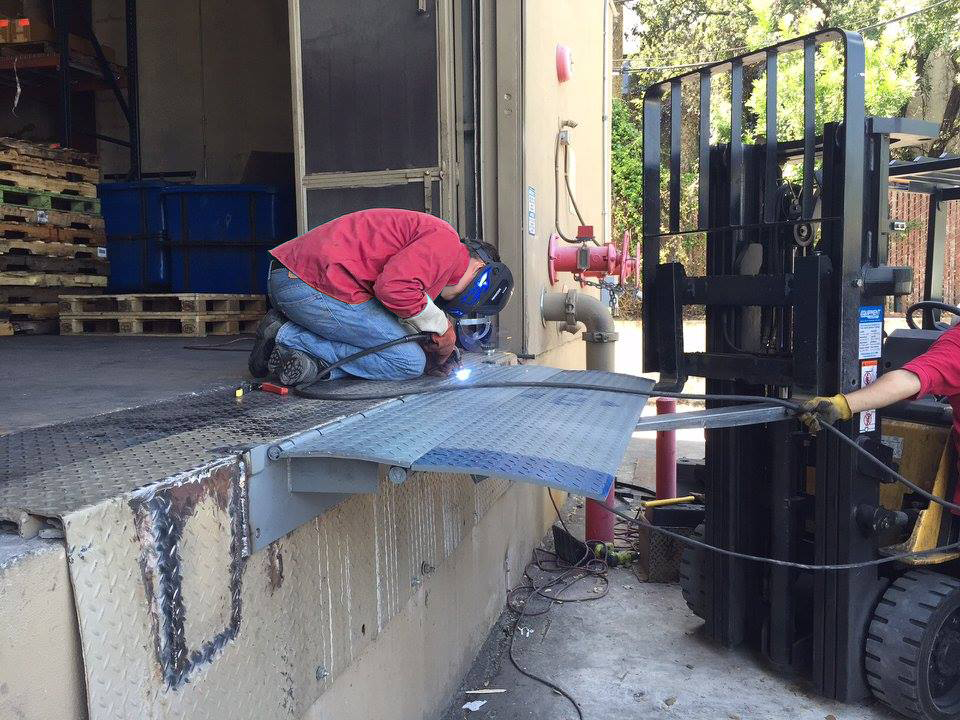Effective Dock Repair Work Techniques: Guaranteeing Structural Stability
Ensuring the architectural integrity of docks via reliable repair service methods is paramount for the long life and safety of marine centers. Ultimately, choosing the appropriate repair service materials, such as corrosion-resistant alloys and composite materials, is vital for toughness.
Evaluating Dock Damage
Analyzing dock damage is an important very first action in ensuring the structural honesty and security of any kind of docking center. Secret elements to examine include the dock's structure, pilings, outdoor decking, and hardware (Dock Repairs).
Architectural engineers or certified examiners normally perform these assessments utilizing specialized tools and strategies. For instance, underwater examinations might use sonar tools or from another location operated automobiles (ROVs) to identify submerged damages. Above water, visual inspections are complemented by utilizing wetness meters and other analysis tools to uncover underlying concerns not immediately noticeable to the nude eye.

Deciding On Repair Products
Selecting the ideal repair service products is an essential action in the dock reconstruction process, one that straight affects the durability and performance of the fixed framework. Product choice need to be driven by aspects such as environmental conditions, load-bearing requirements, and compatibility with existing dock parts. As an example, wood is a typical choice for docks because of its natural durability and visual allure. Nonetheless, picking the appropriate kind of wood, such as pressure-treated lumber or normally rot-resistant varieties like cedar or teak wood, is important to withstand aquatic atmospheres.
Along with wood, composite materials are significantly preferred as a result of their longevity and reduced upkeep needs. Composites, usually made from a blend of plastic and timber fibers, provide superb resistance to rot, bugs, and UV damages. For metal anchors, selecting corrosion-resistant alloys such as galvanized steel or marine-grade aluminum is necessary to prevent corrosion and ensure architectural integrity in saline water problems.
Epoxy materials and marine-grade sealants are essential for fixing fractures and securing joints, offering a water-proof barrier and boosting the dock's overall toughness. By thoroughly selecting top quality products, dock repair work can accomplish long-lasting outcomes, thereby securing against future deterioration and guaranteeing risk-free, reliable usage.
Structural Reinforcement Methods
Reliable structural reinforcement methods are vital in ensuring the stability and long life of dock fixings. This technique is specifically effective for docks revealed to hefty lots or extreme ecological conditions.
An additional vital strategy is the application of fiber-reinforced polymers (FRP) These materials provide high strength-to-weight ratios and outstanding resistance to corrosion, making them excellent for strengthening concrete or wood anchors. FRP can be used in strips or sheets and bound with epoxy materials to enhance structural honesty.
Supporting and anchoring systems also play a vital role in structural reinforcement. Cross-bracing, making use of metal or wooden light beams, can counteract lateral pressures, reducing guiding and activity. Securing systems, such as helical piers or driven piles, supply a stable structure by moving tons to much deeper, much more secure soil layers.
Last but not least, the combination of load-distribution plates can help distribute weight extra evenly throughout the dock's surface, alleviating localized anxiety points. These methods collectively make sure that anchors stay secure and robust, with the ability of enduring the roughness of their functional atmosphere.
Advanced Repair Work Approaches

Another advanced technique involves underwater welding, which permits repair work to be carried out without the requirement to dewater the area. This method is especially helpful for addressing structural problems in immersed dock elements, making sure minimal disruption to procedures. Enhanced welding techniques, coupled with robotic systems, deliver accuracy and dependability, therefore prolonging the life-span of the dock.
Additionally, cathodic protection systems are carried out to stop deterioration in metal dock frameworks. By utilizing sacrificial anodes or satisfied present systems, these methods successfully mitigate the electrochemical processes that result in material degeneration.
Lastly, progressed tracking technologies, such as structural health and wellness monitoring (SHM) systems, offer real-time information on the condition of dock structures. These systems make it possible for proactive maintenance and timely interventions, eventually guaranteeing the long-term architectural stability of the dock.
Maintenance and Prevention
Upkeep and avoidance are basic ideas that underpin the durability and safety and security of dock frameworks. Regular inspections are paramount, enabling very early detection of damage, potential weak points, and ecological effects. A positive method, involving regular checks for deterioration, rot, and architectural shifts, reduces costly repair services and prolongs the dock's functional life.
Safety nets must consist of using safety finishings to metal parts to secure versus corrosion and utilizing treated timber to resist degeneration. In addition, ensuring appropriate water drainage and air flow can stop water build-up, which is a typical reason for structural destruction. Integrating quality informative post materials and adhering to maker standards throughout building and construction and repair phases also play important duties in boosting durability.

Training employees in dock upkeep finest practices guarantees constant application of preventive measures. Leveraging technical developments, such as drones for assessments and sensing units for real-time monitoring, can even more enhance upkeep initiatives. By prioritizing maintenance and avoidance, dock proprietors can make sure structural integrity, operational safety and security, and cost-efficient monitoring over the dock's life expectancy.
Final Thought
In final thought, maintaining the structural honesty of marine facilities demands thorough dock repair methods. Advanced repair methods, combined with normal upkeep practices, make certain the dock continues to be safe and Full Report operational under varied environmental problems.
Ensuring the structural stability of anchors via effective repair work strategies is paramount for the longevity and security of aquatic centers.Selecting the suitable repair service materials is a crucial action in the dock restoration process, one that directly affects the long life and efficiency of the fixed framework.Reliable architectural support strategies are critical in making sure the stability and longevity of dock repair work. By prioritizing maintenance and prevention, dock owners can ensure structural honesty, functional safety and security, and cost-effective management over the dock's life expectancy.
In final thought, keeping the architectural stability of marine facilities necessitates thorough dock repair service methods.